Sunday, August 6: After walking through the mystical Okunoin, I stop to check in at Kumagaiji, the temple lodging, or shukubō, where I plan to spend the night. I don’t linger, since I have plenty of time this evening to explore the temple, but instead head out to finish exploring Kōyasan, making my first stop at Kongōbu-ji Temple.
In the year 804, Kobo Daishi (Kukai) crossed the sea to China to seek out Buddhist teachings. In the capital of Tang Dynasty China, he found a lineage of Buddhism, Shingon Buddhist, relatively unknown in Japan. Returning to Japan in 806, he began teaching. In 816, he was granted permission from the Imperial Court to build a monastic complex at Mt. Kōya, isolated from the distractions of the capital. Kobo Daishi lived and taught in Mt. Kōya for many years until he finally entered into eternal meditation in 835. Pilgrims flock to his mausoleum at Mt. Kōya in great numbers every year. He is believed to give aid and comfort to the millions of people who pray to him in their homes, local temples and at Okunoin.
The original temple was built in 1593 to memorialize Toyotomi Hideyoshi’s mother, some of whose hair was kept here. The temple was lost in fires two or three times and was rebuilt in 1863. Two temples, Kozanji Temple and Seiganji Temple, were combined in 1869 and renamed Kongōbu-ji Temple, meaning Temple of the Diamond Mountain Peak, to function as the headquarters of Kōyasan Shingon Buddhism. Kongōbu-ji is part of the “Sacred Sites and Pilgrimage Routes in the Kii Mountain Range” UNESCO World Heritage Site.
The gate is the oldest building at Kongōbu-ji and was constructed in 1593.

Kongobuji Temple
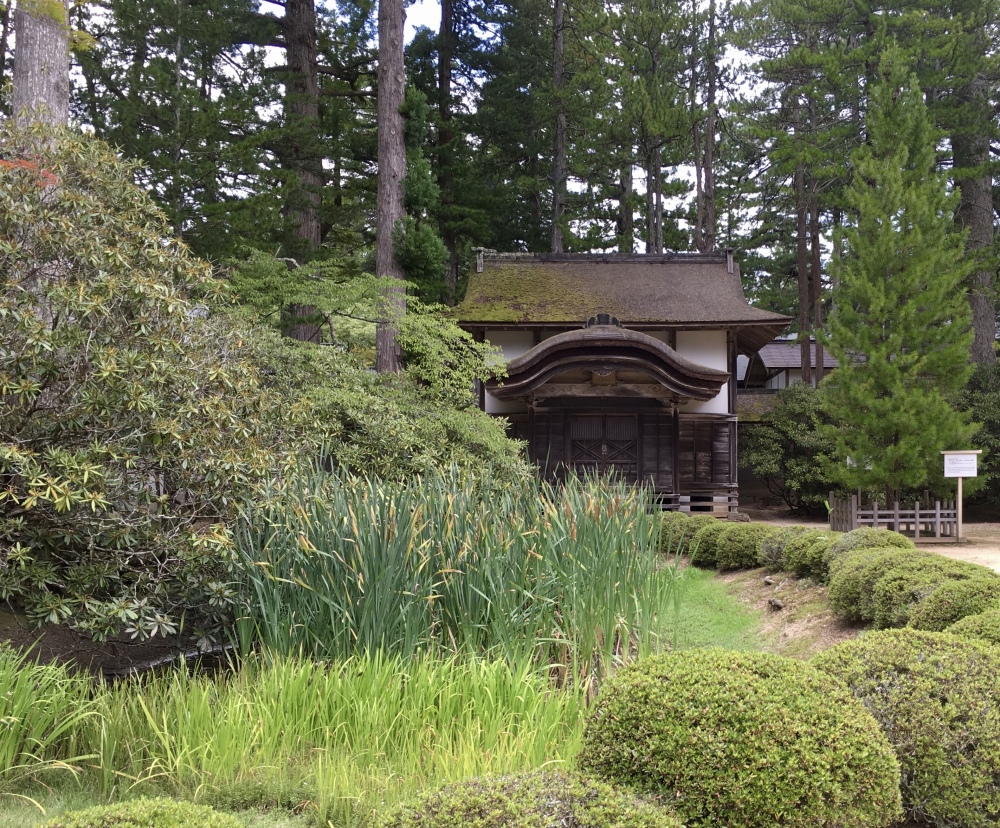
Kongobuji Temple
The Koya-maki (Japanese umbrella pine) was planted to celebrate the imperial visit of Emperor and Empress Showa on April 18, 1977. Koya-maki is the seal of Prince Hisahito.

Koya-maki (Japanese umbrella pine)
Kongōbu-ji Temple is centered around the Great Main Hall.

Kongobuji Temple
A Buddha Hall contains many sliding screen doors of cranes guessed to have been painted by Tashitsu Saito, who was active in the early Edo period.
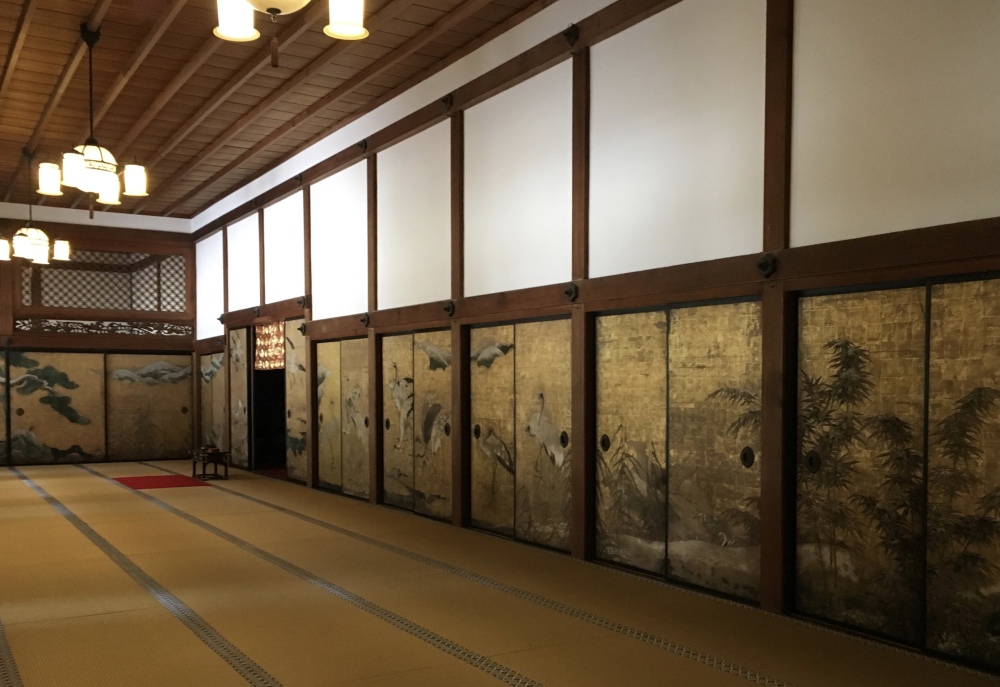
Ohiroma

Ohiroma
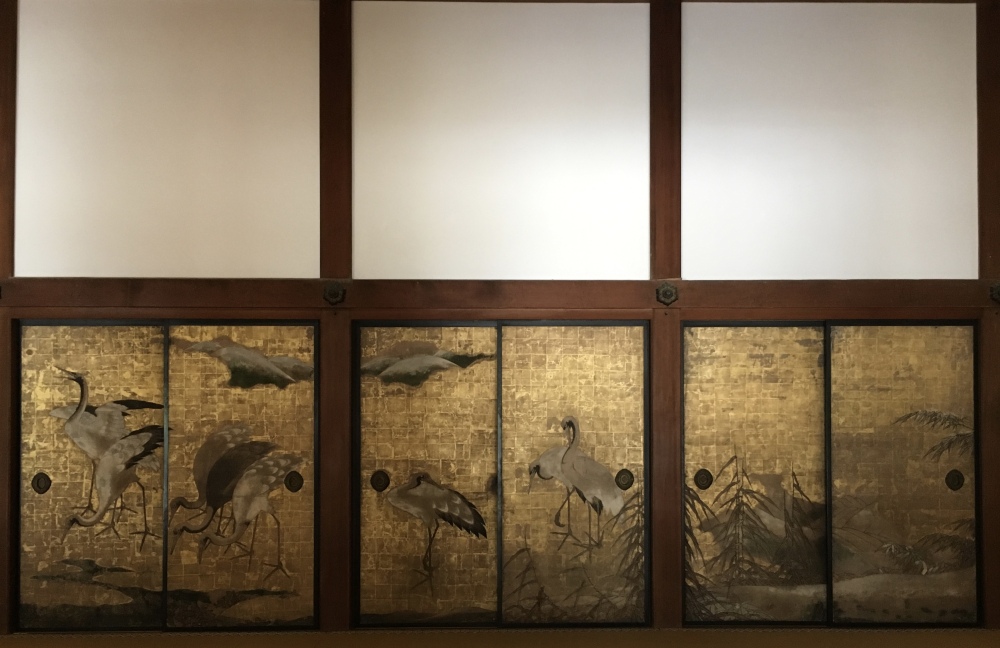
Ohiroma
Out on the porch are panels of Japanese characters but I’m not sure what they are.

panels of wishes?
The temple’s modern Banryūtei rock garden is the largest rock garden in Japan (2,349 meters). The design is of a pair of dragons emerging from a sea of clouds to protect the temple. The dragons are made of 140 pieces of granite brought from Shikoku while the white sand is from Kyoto.
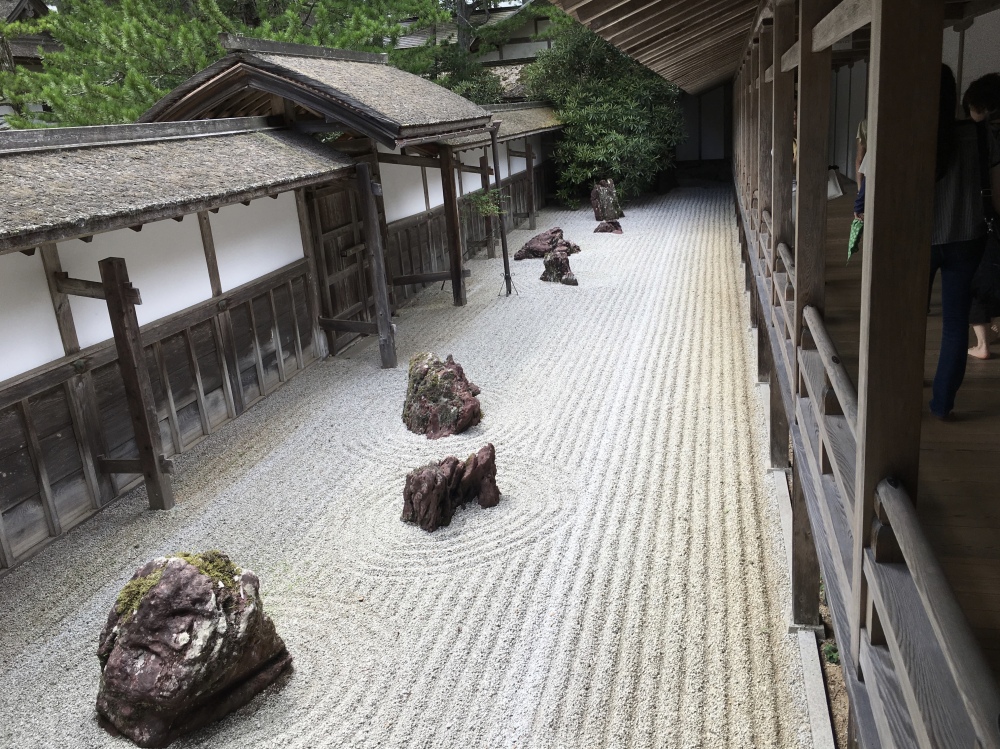
Banryūtei rock garden
I love looking at this amazing rock garden from every possible angle.

Banryūtei rock garden

Banryūtei rock garden
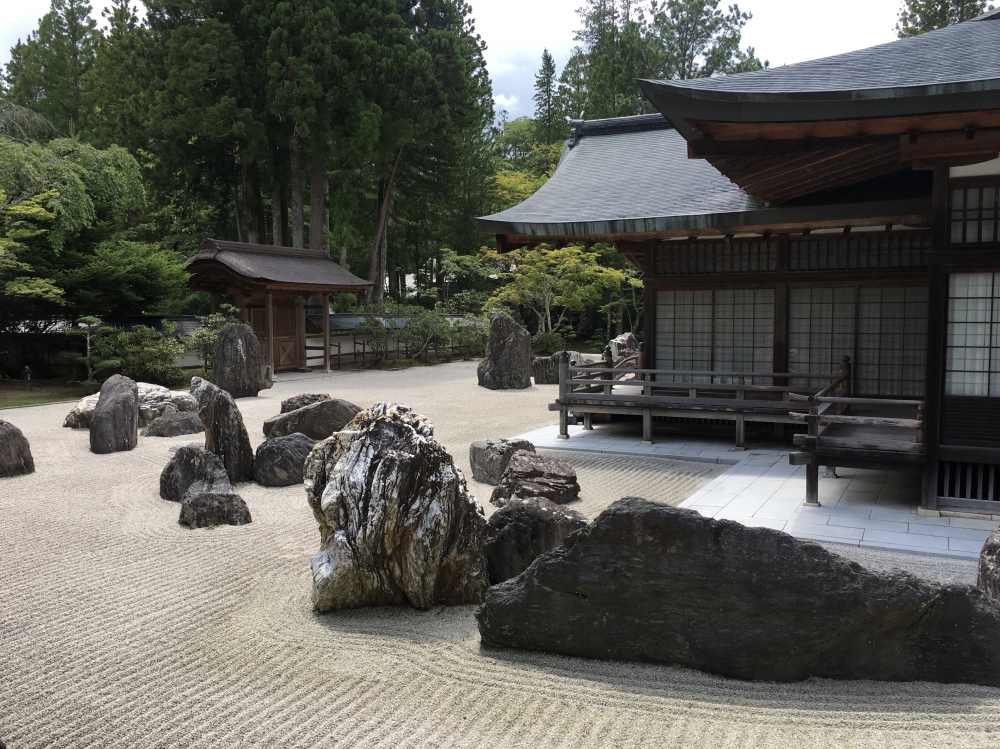
Banryūtei rock garden
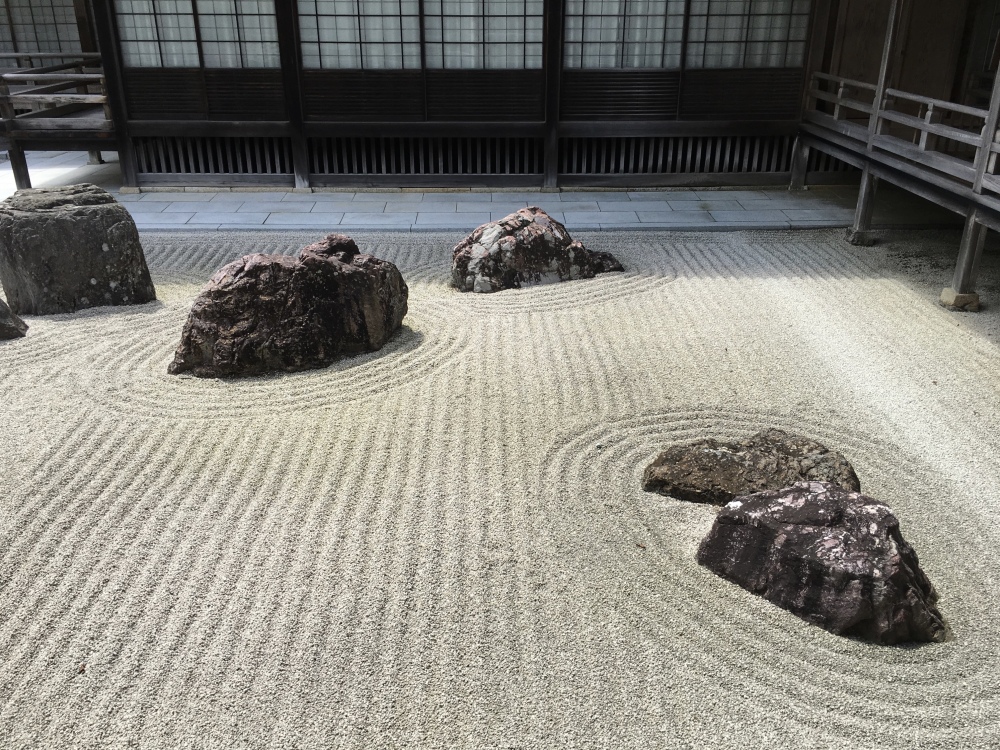
Banryūtei rock garden
Inside, I find more panels of crane paintings.

painted panels

Kongobuiji Temple
Visitors can get a glimpse of the Mausoleum of Bishop Shinzen, originally built in 1640 to honor Shinzen, the disciple and successor of Kobo Daishi. He worked as a manager of Koyasan for 56 years. A small altar is set up in front, and the building is roofed in the traditional way with cypress bark. Repairs were completed in October, 1989 in preparation for the 1100th anniversary of Shinzen’s death. During the repairs, a relic container was discovered. The building was consequently renamed the Mausoleum of Shinzen and rededicated.

The Mausoleum of Bishop Shinzen
After leaving, I wander along the main road, passing once again past the beautiful grounds of Shojoshin-in, another shukubō.

Shojoshin-in

Shojoshin-in

Shojoshin-in
The garden of Hōzen-in Monastery was here in the early Momoyama Period (1573-1615). The stones are arranged to symbolize the landscape. The waterless waterfall is an unusual feature.

Hōzen-in Monastery
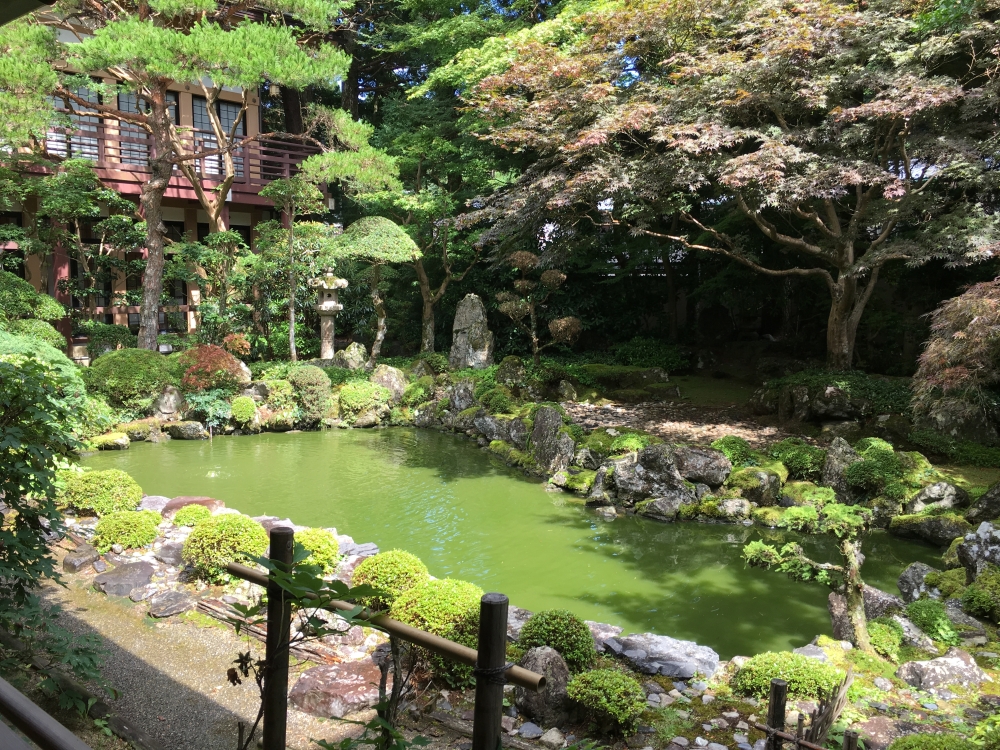
The garden of Hōzen-in Monastery

The garden of Hōzen-in Monastery

The garden of Hōzen-in Monastery
Ekōin is another temple lodging with pretty grounds.
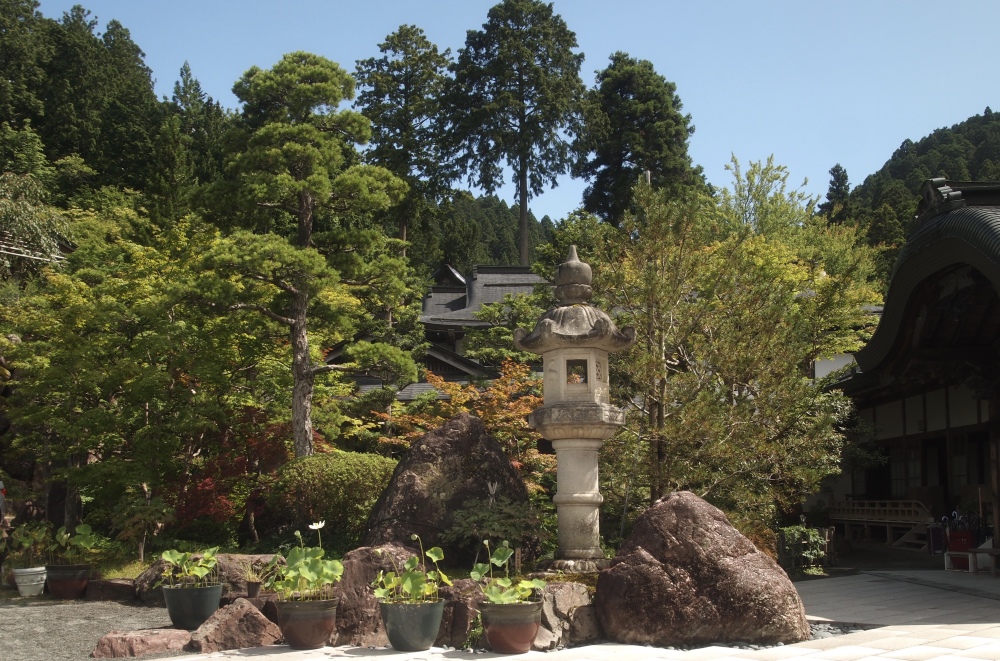
Ekōin
Karukayado Temple tells the story of Karukaya-Doshin and Ishidomaru in panels spread around the inside perimeter. You can read some of the story here.

Karukaya-Doshin and Ishidomaru

Karukaya-Doshin and Ishidomaru
The first panel depicts the feudal lord, Kato-Hyuoenojo-Shigemase, who lived in modern Fukuoka prefecture over 800 years ago. He had no children, so he prayed at Kashii-no-miya shrine. As a result, he was blessed with a child. When the child grew up, he was named Kato-Saemon-Shigeuji and was later given the name Karukaya-Doshin.

the feudal lord prays for a child
The rest of the story of Karukaya-Doshin and Ishidomaru encircles the temple in panels, with the story written in both Japanese and English.
I continue walking down the main road and climb steps under a series of torii gates to explore Kiyotaka Inari Shrine.

Kiyotaka Inari Shrine

Kiyotaka Inari Shrine

Kiyotaka Inari Shrine
A small family seems to be in charge of this shrine. The father and son point to the cedar trees that meet and grow together near their tops.
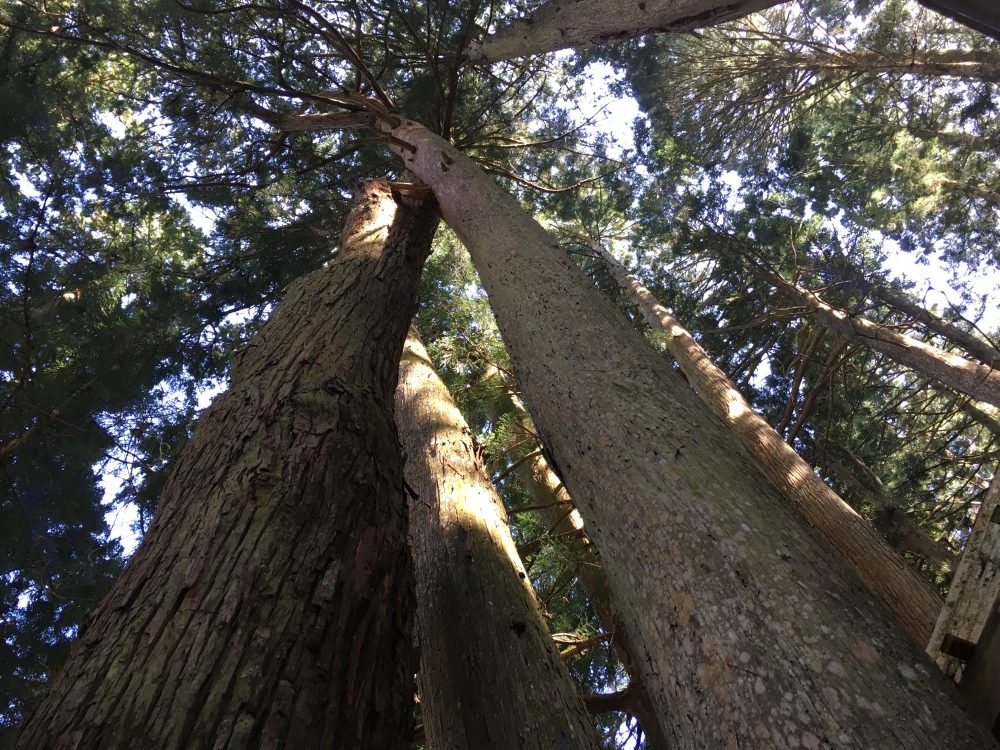
cedars growing together at Kiyotaka Inari Shrine
The boy offers me a cup of tea and a snack, which I enjoy as I haven’t yet had lunch and it’s near 2:30.
As I continue my walk down the street, I find a contemplative monk clopping down the sidewalk in wooden sandals.

a monk walks by a Koyasan temple
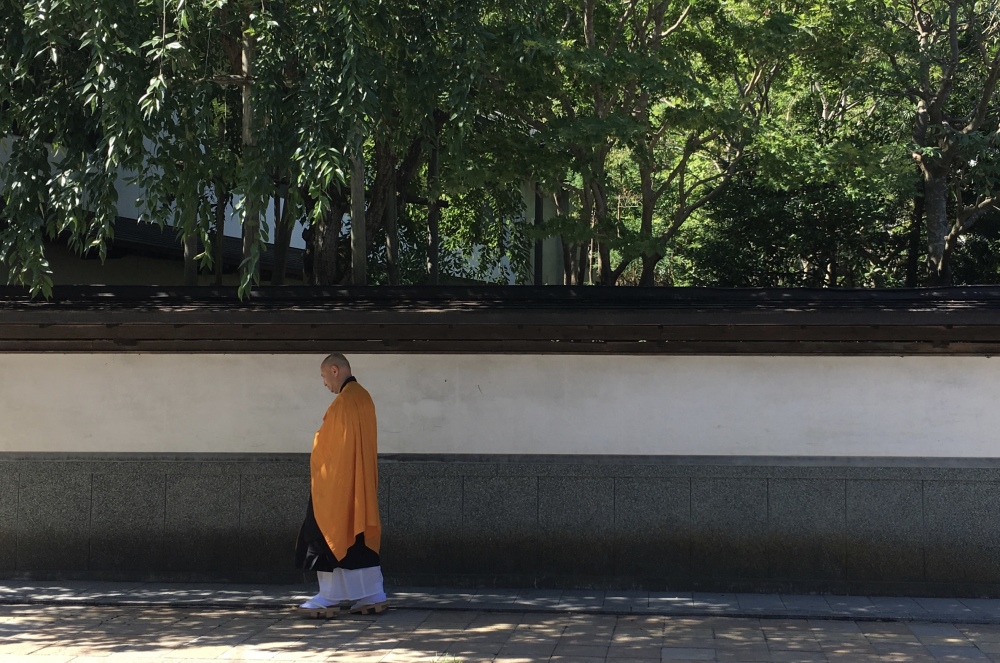
a monk in motion

Koyasan temple
I find a late lunch in a small unpretentious cafe.
At 3:10, I’m tired and hot from all my walking. So I go to Kumagaiji, my temple lodging for tonight, and simply walk around the temple and the grounds for a short time.

Kumagaiji

Kumagaiji

Kumagaiji

Kumagaiji

Kumagaiji
The grounds of Kumagaiji have the typical Japanese garden with a pond and stone lanterns.

Kumagaiji grounds

Kumagaiji grounds
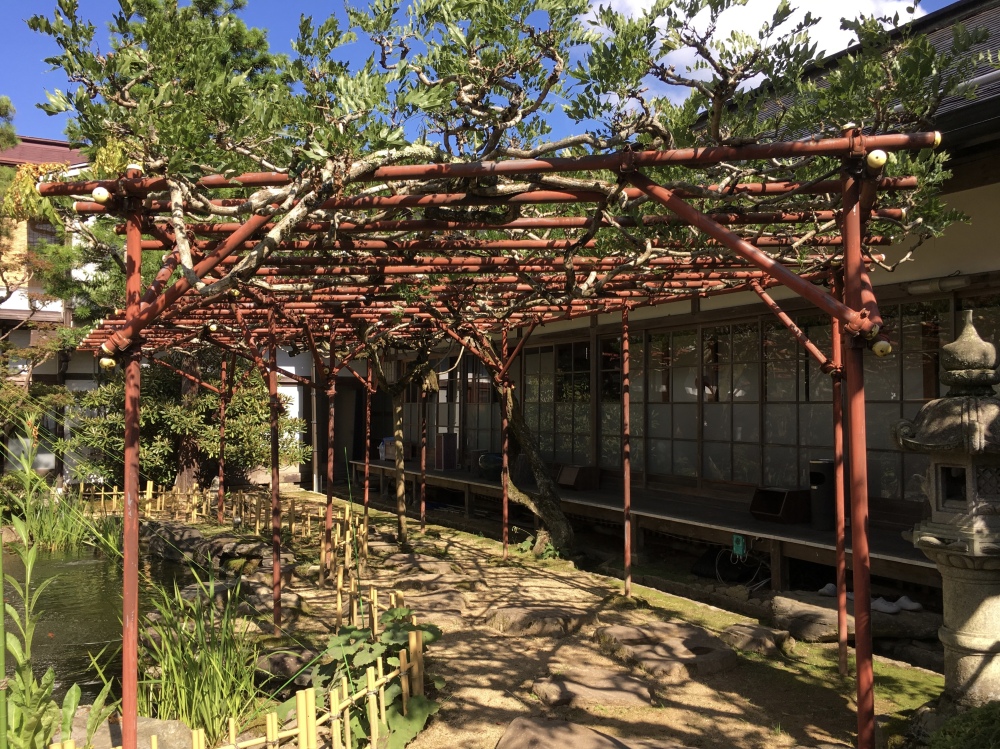
Kumagaiji grounds

Kumagaiji grounds
Finally, I lie down on my futon in my small tatami-matted room with a fan blowing directly on me. Last night, at Kongo Sanmaiin, the temple was air-conditioned, but this one is not, and it’s quite miserable. The fan just doesn’t work to cool me off, but I try to take a short nap anyway.
The Kumagaiji guests sit down for dinner at 5:30.
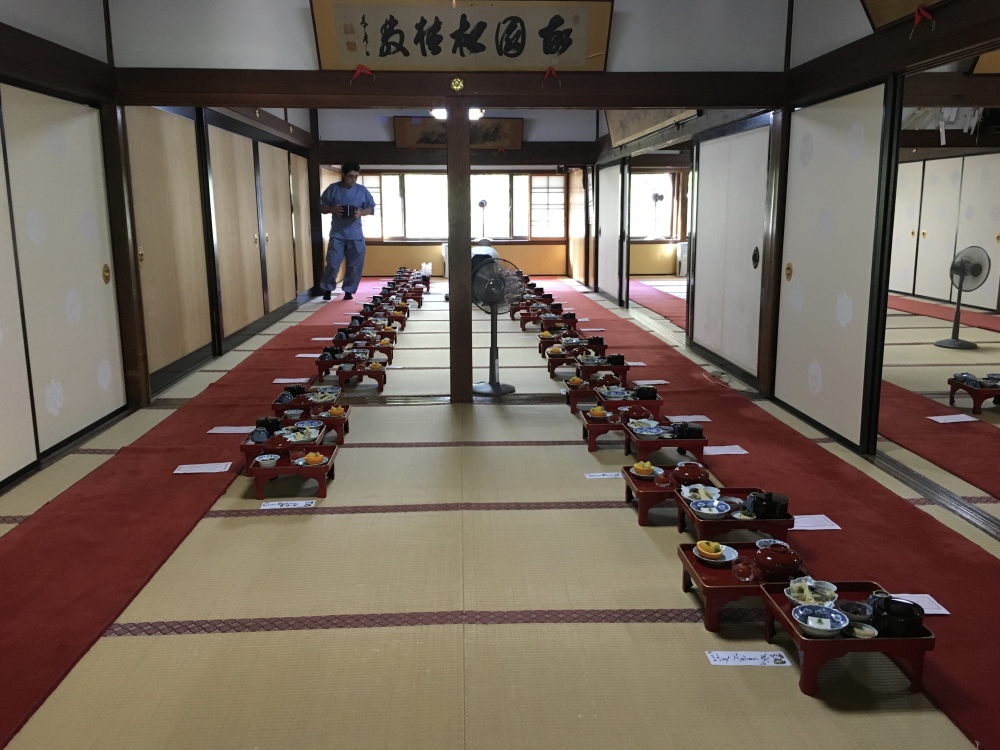
dinner at Kumagaiji
The dinner is quite similar to the one I had last night at Kongo Sanmaiin, but it isn’t quite as good. Maybe because of the heat…

dinner at Kumagaiji
In the middle of our dinner at Kumagaiji, a Japanese lady from the temple’s staff alarms us with news that a typhoon is coming overnight. She warns that the typhoon might shut down the cable car and thus not be able to take us down the mountain in the morning. As I have a 7-hour trip from Koyasan to Narita planned for tomorrow, and an early flight back to the U.S. on Tuesday morning, I am worried that I might not make it to Narita tomorrow. After debating with myself in my sweltering room for a half-hour after dinner, I quickly make a reservation at Osaka Garden Palace, pack up my bag and check out of the temple lodging, losing the 12,000 yen (~$110) I already paid. I catch a bus to Koyasan Station, where I catch the 7:50 p.m. cable car to Gokurakabashi Station. The cable car is deserted except for a Spanish guy and a Japanese girl, both of whom speak a little English and take me under their wings. They are also headed to Osaka, so we decide to stick together.
We catch the 7:59 Nankai-Koya Line to Hashimoto Station, arriving at 8:46, and then stay on the line to Namba Station.
This is what the Nankai-Koya train line to Namba Station looks like at 9:14 p.m., nearly deserted. We arrive almost an hour after leaving Hashimoto Station, at 9:35.

on the Nankai-Koya Line to Namba Station
At Namba Station, I have six minutes before I must catch the Midosuji Line to Shin-Osaka, so I jump off the train and use the bathroom; luckily there’s a toilet right at the end of the platform. I make it back to the train on time, but as I get back on a different car, I lose sight of the Spanish guy and Japanese girl. They had offered to get off with me, but I told them not to worry, I’d be fine on my own.
At 9:57 p.m., I arrive at Shin-Osaka Station, where I buy a Shinkansen ticket for 8:40 a.m. Monday morning to Tokyo. I know I will need to get an early start because the typhoon is expected to hit the Kansei area in late morning. I’ve heard that even the Shinkansen might stop running in typhoon weather. I can’t abide any delays because I certainly don’t want to miss my flight home on Tuesday morning.
I have a Google Map on my phone showing me how to get from Shin-Osaka Station to the Osaka Garden Palace. It looks like about a half-mile walk. It isn’t easy to find. It takes me an hour, lugging my suitcase through a mostly residential and quite deserted area of Osaka, to find the hotel. I finally happen upon two women taking a walk, one of whom luckily speaks a little English, and points me in the direction of the hotel. I finally arrive at 11:00 p.m. exhausted and annoyed that I have to spend another 7,000 yen (~$64) for lodging, when I already paid for the night at Kumagaiji.
So much for my relaxing temple stay, and the cold beer that enticed me from the temple’s vending machine!
Steps today: 23,485 (9.95 miles). Whew! What a day. 🙂

































